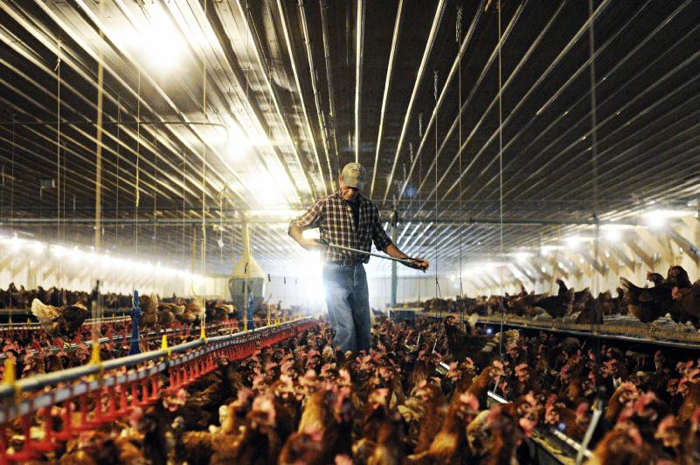These happy chicks are three days old today. Ever since they hatched, they have been showered with love and attention 24 hours a day. They are now well bonded with their mother and stay close to her, watching her every move, and mimicking what she does.
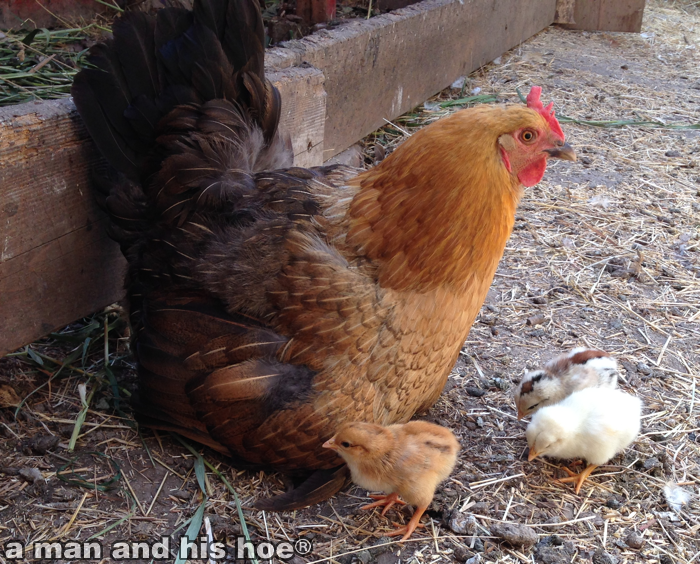


What Laying Hens Deserve
[wpvideo 5B7lWoSH]
This is how one hen lays her egg. Afterwards, she spends a few minutes doing a little nesting, and then she leaves the nest. Each hen is different. Some leave the nest soon after laying their eggs. Others will settle down afterwards and sit for awhile.
What they all need are quiet, soft, clean nests with plenty of straw. What no hen deserves is to be locked in a wire cage, unable to be outdoors and enjoy the sun and rain, or unable to lay her egg in a soft nest.
What no hen deserves is to be housed with tens of thousands of other hens in crowded laying houses, where there is no peace and quiet, no quiet walks in the woods, no hunting for food through tall grass, and no sunshine.
How Apple Pie Starts
This is how apple pie starts – as a small flower. It’s late April and the apple trees are blooming several weeks early. Soon, wild bees will pollinate these flowers, and all summer long the apples will soak in the sunshine and grow until they are ready, in early fall, to be eaten right off the tree or made into apple pie. From now into fall, the air buzzes with the sound of wild bees. According to Wild Bees as Alternative Pollinators, by the Penn State:Fruit Research and Extension Center, there are “3,500 bee species other than the honey bee which are also important pollinators of most specialty crops in the U.S.” 80% of bees are ground nesting, so it’s critical to have undisturbed land to provide habitat for these bees to thrive.
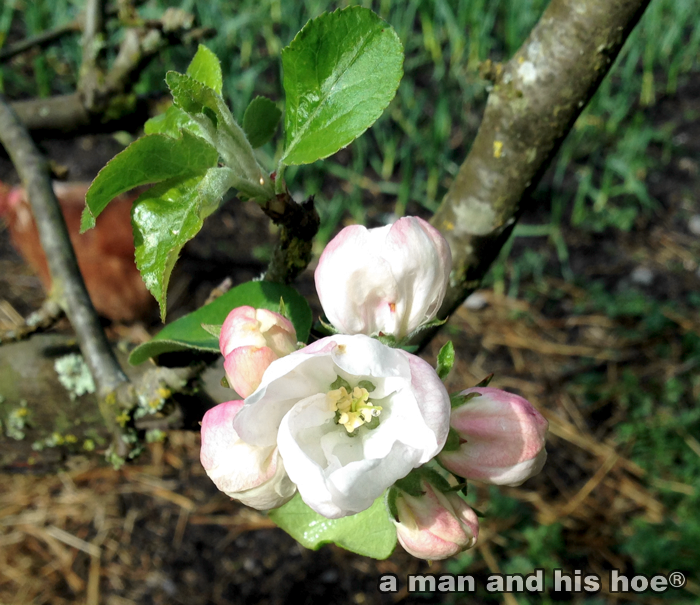
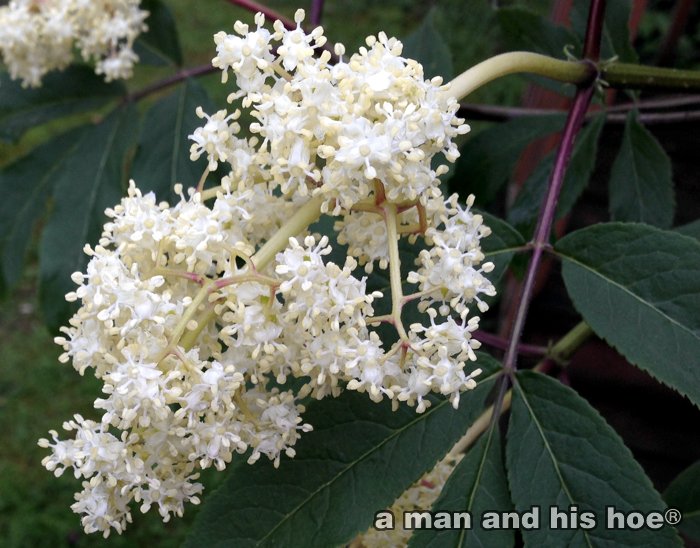
The elderberry bushes are also in full bloom. Come June, they will provide plenty of red fruits for wild birds to eat.
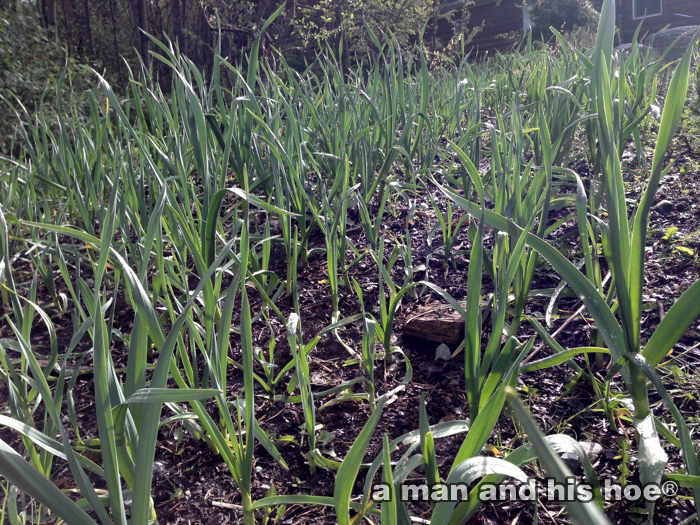
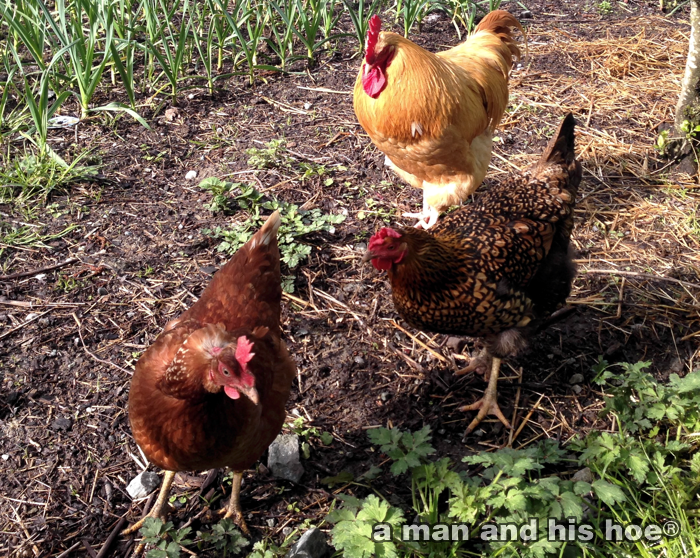
The garlic patch is nearly knee high. Lucky, Billy, and Imelda are looking for something to eat along the edges of the garlic patch. Lucky is the most curious hen at a man and his hoe®. No matter where we go, she is sure to come along to see what we are doing. And Imelda seems to have been smitten with Billy, the five year old rooster. Wherever he goes, she follows. At a typical egg or poultry farm, hens and roosters never get to develop these romances. It’s one of the benefits of being a chicken at a man and his hoe®.
Articles on wild bees:
- Wild bees make honey bees better pollinators – UCBerkeleyNews
- Wild bees enhance honey bees’ pollination of hybrid sunflower Sarah S Greenleaf and Claire Kremen – Proceedings of the National Academy of Sciences of the USA
- Attracting wild bees to farms is a good insurance policy Michigan State University
- Wildflowers and natives to attract bees and pollinators
- The Other Bees by Kristin Ohlson in modern farmer
Transitions
The gang of 5 chicks born March 25 are nearly a month old and spending more time away from their mother. This afternoon I found them resting together, their mother happily feeding by herself.
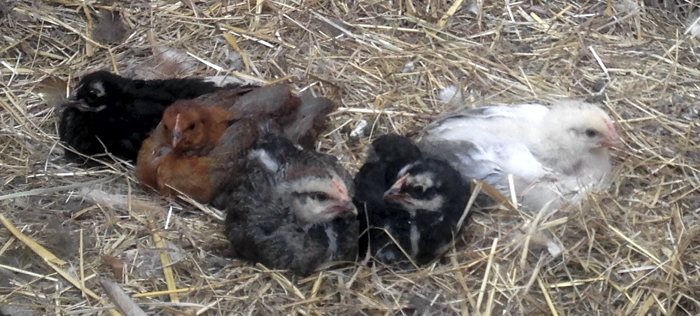
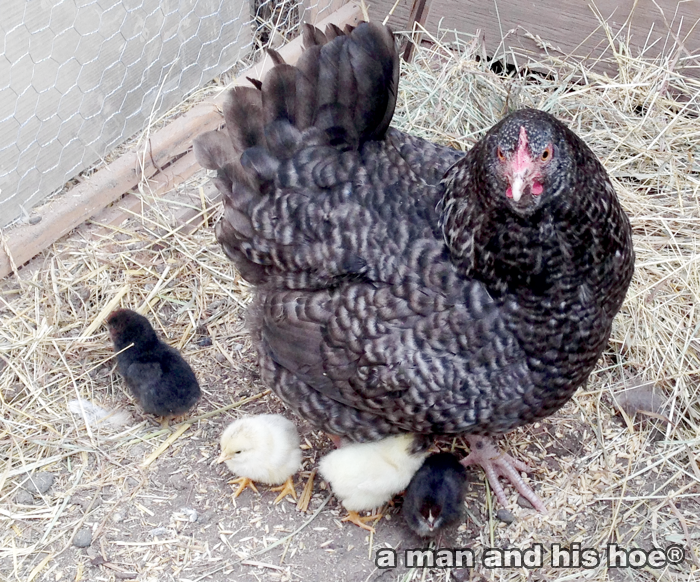
While these one day chicks, born on Easter, are getting their first taste of life outside the nest. They have a very feisty mother. In fact the most protective hen I’ve seen. It will be interesting what sort of mother she turns out to be. The variety of personalities even among hens is remarkable. Here at a man and his hoe®, the chickens have the space and freedom to let their personalities bloom.
First Post Child Rearing Egg
Hens lay special eggs at times. There is the very first egg they lay, which is a tiny egg. There is the first egg they lay after their winter lull. These eggs also tend to be smaller. And then there is the first egg they lay after raising chicks. And today this mother laid her first egg after raising chicks for three weeks. That is on the early side. Most hens take more than a month before they go back to laying eggs.
I get the sense that this mother may not be raising her chicks much longer. They are getting very independent and at times during the day they stray tens of feet from her. When she was up on the nest laying her egg, her five chicks huddled together and waited patiently for her to come back down.

Dirt Bath
On a bright sunny day, chickens enjoy having a bath in the warm dirt. They can spend an entire hour rolling around in the dirt, and often they like to do this in small groups. This is behavior that is innate and something they seem to need to do, like pigs needing to wallow in mud.
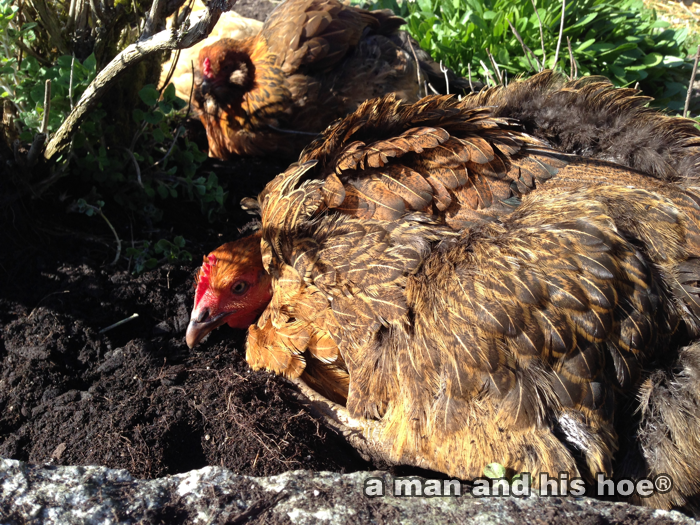
So how do birds in these cage-free “humanely-raised” egg laying operations get to roll around in the dirt in the bright sunshine and fresh air? The next time you buy eggs, ask the grocer if the hens who laid the eggs you are buying, get to spend hours rolling around in the dirt in the afternoon sun.

[wpvideo 4WdMujB4]
The Importance of Siblings
Next to a mother, siblings are the most important relationships young chickens have. When you go shopping for chicken and eggs, the fact that chickens develop such relationships probably doesn’t cross your mind. But chicks which are raised by their mother, develop strong attachment to their brothers and sisters. So, when their mother leaves them on their own, the siblings stick together. They roost together and roam together.
As they age, their sibling relationships get more complicated. The males and female chicks start to separate, with the males hanging out together, and the females sticking together. It’s only possible for chickens to have these sibling attachments where they are raised by their mothers and have plenty of space to be themselves.



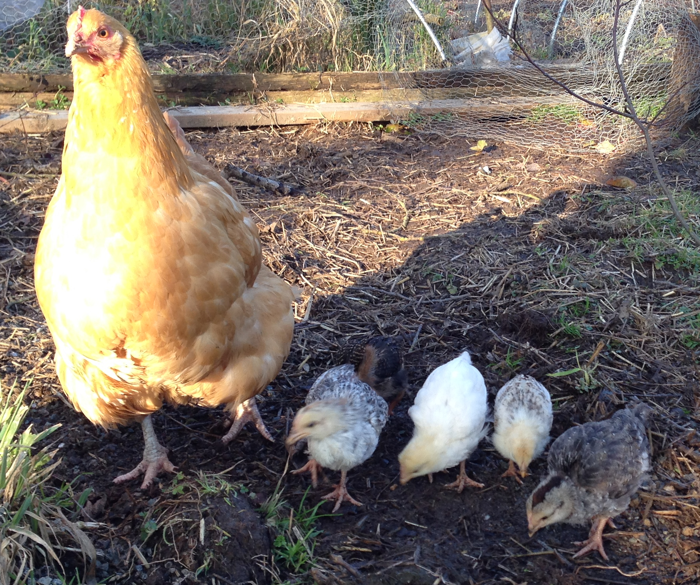
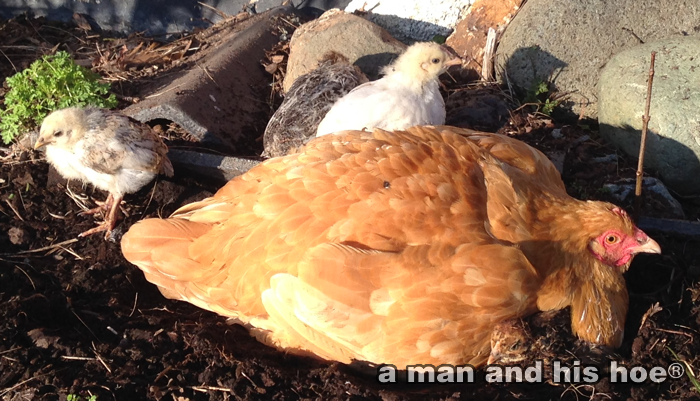
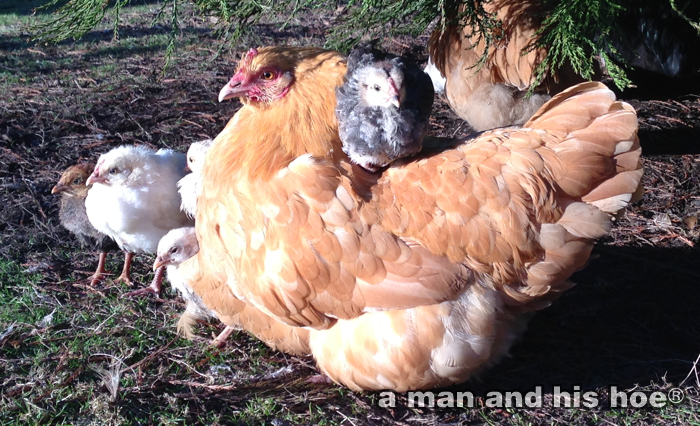





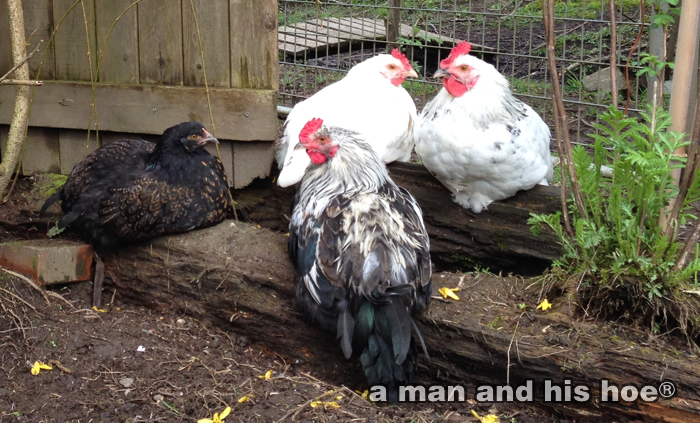
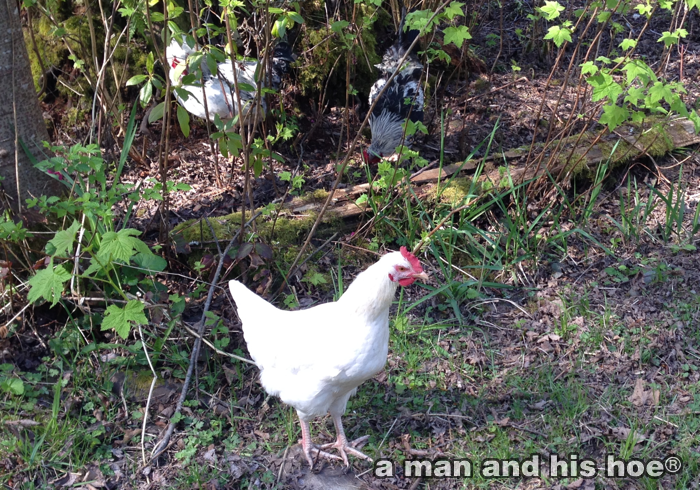
An Afternoon by the Pond – Chickens in Paradise
Producing food is all about encouraging life. All kinds of life. And life is beauty, so in a way, producing food is about beauty.
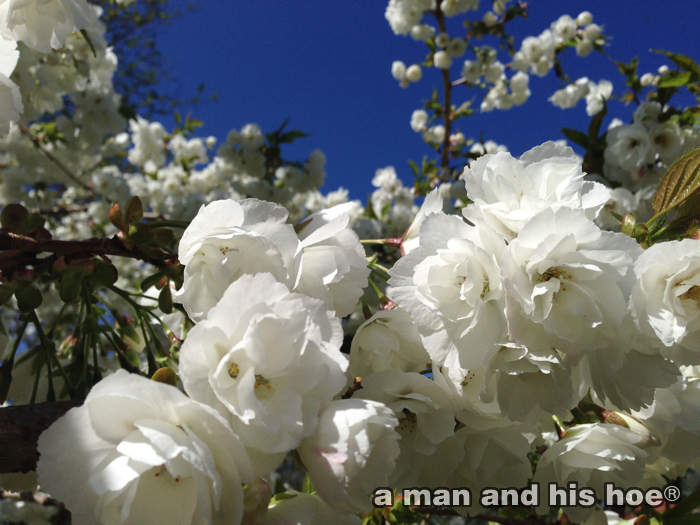

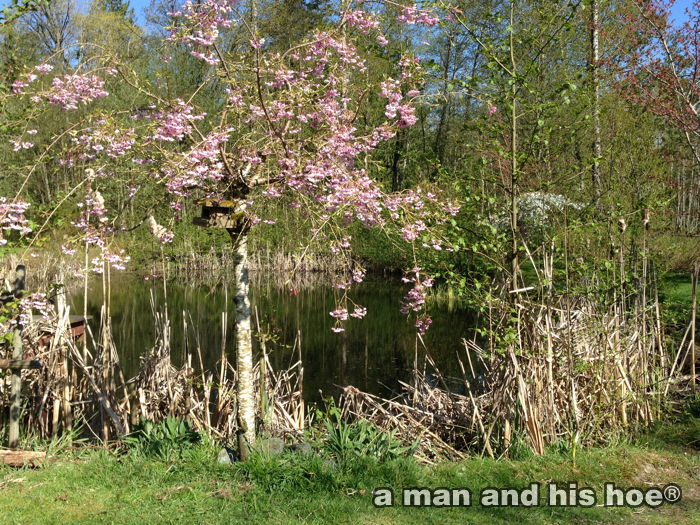
So do you think the chicken you buy, or the hens who lay the eggs you eat, ever get to take a stroll by a pond on a sunny spring day?
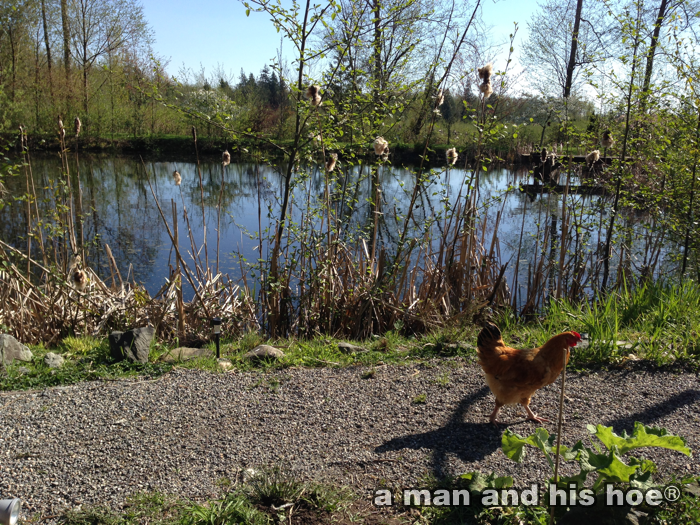

Do you think they ever get to walk along the shore of a pond and dig for things to eat in the mud by the pond? Maybe that should be a requirement for humanely grown chicken, that they have the freedom to go digging for food on the shores of a pond. How close to nature do you want your chickens and egg layers to live? Or has this inconsequential chicken farmer gone mad?
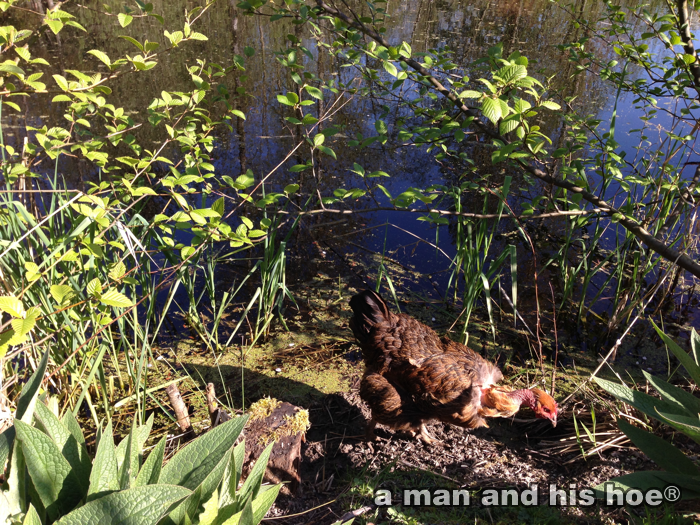
Dinosaur Descendants
Scientists since 1870 have speculated that birds descended from dinosaurs. In the Smithsonian Magazine article Dinosaurs’ Living Descendants, Richard Stone writes that there was a lack of evidence until a poor Chinese farmer discovered a fossilized skeleton with a birdlike skull, a long tail and impressions of feather-like structures. This discovery of bird-like dinosaurs helped paleontologists fill in blanks in the fossil record, and have convinced many, that birds descended from dinosaurs.
Which makes me wonder if these dinosaurs were as beautiful as some of the chickens here. The feathers have so many subtle colors, and some have wild patterns that dazzle the eye
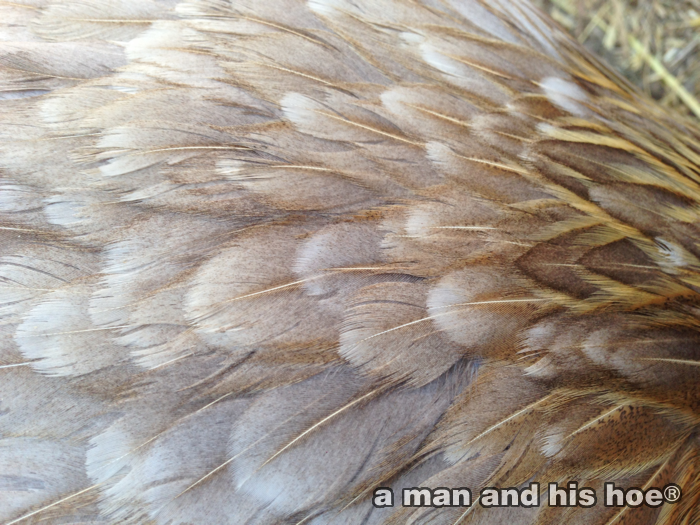
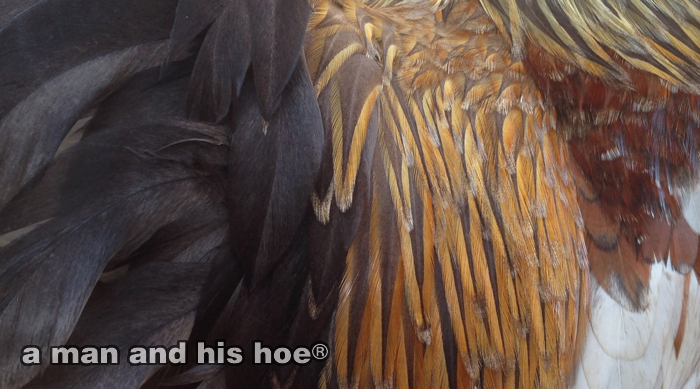
- Origin of Birds – Wikipedia
- Birds: The Late Evolution of Dinosaurs – Natural History Museum of Los Angeles
- The Life of Birds: Evolution – PBS
- Birds and dinosaurs – one of the great fossil connections – The Guardian
- ScienceShot: When Did Feathered Dinosaurs Become Birds? – Sciencemag.org
Enjoying the Sunshine
No, there’s nothing wrong with this hen. She’s just stretching to soak up as much sunshine as possible. When hens are out soaking up the sun, they’ll stretch their legs out and contort their bodies into hilarious positions. From what I’ve observed during eight years of keeping chickens is that time out in the sunshine is a necessity. Chickens really need lots of space to lay great eggs, and they need lots of time out in the sun.

So how do hens in a cage-free laying barn like that pictured below get to have their time out in the sun? They don’t, and neither do most of the hens who lay those cage free eggs you see in the supermarkets.
